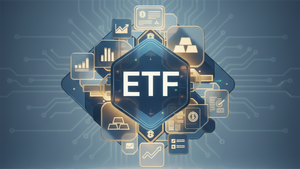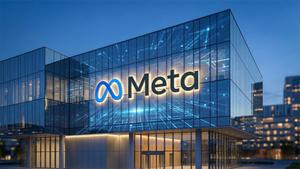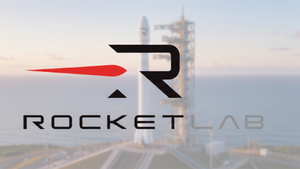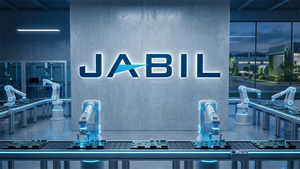
Netflix (NASDAQ: NFLX) is currently undergoing a significant executive reorganization, marked by recent high-profile departures and strategic internal realignments. These changes unfold against a backdrop of rapid advancements in artificial intelligence, which is increasingly reshaping content creation and intensifying competition within the film and streaming industries. The streaming giant's proactive embrace of AI, while streamlining production and personalizing user experiences, also presents complex challenges related to intellectual property, labor displacement, and ethical considerations.
This period of transition signifies a critical juncture for Netflix, as it seeks to maintain its dominant position in a fiercely competitive global media landscape. The company's strategic decisions regarding leadership and technological adoption will not only dictate its own future trajectory but also set significant precedents for how the broader entertainment sector integrates AI and manages the ensuing shifts in creative processes and market dynamics.
What Happened and Why It Matters
Netflix has experienced a series of notable executive changes that underscore its strategic evolution amidst an increasingly complex global media and technology landscape. In September 2025, Chief Product Officer Eunice Kim, a key figure in initiatives like the ad-supported plan and efforts to curb password sharing, departed after nearly five years. Her exit, following a promotion to CPO in October 2023, has sparked discussions among industry analysts regarding the future direction of Netflix's product innovation. Co-CEO Greg Peters lauded her contributions, and Chief Technology Officer Elizabeth Stone will temporarily assume Kim's duties.
Prior to Kim's departure, October 2024 saw the exits of Chief Communications Officer Rachel Whetstone and Vice President of Global Public Policy Dean Garfield. These movements were part of a planned restructuring by Co-CEO Ted Sarandos, aiming to consolidate communications and public policy under a new Chief Global Affairs Officer role. Whetstone, with a strong background in public relations from tech giants like Google (NASDAQ: GOOGL) and Uber (NYSE: UBER), reportedly declined the broader role, while Garfield lacked the necessary corporate communications experience. Until a permanent appointment, publicity teams now report to Chief Marketing Officer Marian Lee. Earlier in January 2024, film chief Scott Stuber, who significantly grew Netflix's original movie output, also left to establish his own firm.
These executive shifts occur at a time when the entertainment industry is grappling with the accelerating influence of Artificial Intelligence (AI). Netflix has a long history with AI, dating back to the "Netflix Prize" competition for recommendation algorithms. Today, it leverages AI extensively for personalized recommendations, streaming optimization, and increasingly, content creation. A significant milestone occurred in July 2025 when Netflix publicly acknowledged using generative AI for final footage in its Argentine sci-fi series "The Eternaut." This involved using AI to create a complex building collapse scene "10 times faster and cheaper" than traditional visual effects. Co-CEO Ted Sarandos emphasized AI's potential to enable higher production quality for smaller markets, stating it helps creators make films "better not just cheaper."
The initial market reaction to these executive changes has been mixed, yet Netflix has shown resilience. Despite leadership transitions, the company's stock performance has been robust, increasing by 40% year-to-date by September 2025, driven by its ad-supported tier, diverse global content strategy, and ventures into live events and gaming. However, the industry's response to Netflix's overt embrace of AI in production has been more critical. Following the 2023 Hollywood strikes, which included demands for AI protections, Netflix's disclosure of using generative AI for final footage has reportedly caused "fury" and "scared" responses among Hollywood creatives concerned about job displacement. This highlights the tension between AI's efficiency gains and its potential societal and labor implications within the entertainment sector.
Winners and Losers in the AI-Driven Content Race
The current upheaval at Netflix and the broader integration of AI into filmmaking are creating a clear delineation of winners and losers across the entertainment ecosystem. Companies and entities that can swiftly adapt to and strategically leverage AI, while managing the associated ethical and labor challenges, are poised for significant gains.
Netflix (NASDAQ: NFLX) itself presents a complex case. While executive departures like Eunice Kim, Rachel Whetstone, Dean Garfield, and Scott Stuber introduce potential challenges in continuity of leadership and strategic direction, the company's proactive stance on AI and diversification into areas like live sports with WWE (NYSE: TKO) suggest a strong adaptive capacity. Netflix's robust subscriber growth and stock performance, fueled by its ad-supported tier and global content strategy, indicate it is actively shaping its future, aiming to win by staying at the vanguard of technological adoption. However, it must successfully navigate internal transitions and external AI-related backlashes to fully capitalize on its strategy.
Other Streaming Services are also positioning themselves. Competitors like Disney+ (NYSE: DIS) and Amazon Prime Video (NASDAQ: AMZN) stand to benefit if Netflix falters in its product innovation or content strategy post-executive departures. These platforms are already heavily investing in AI-driven personalization and content optimization, indicating that success in the "streaming wars" increasingly hinges on technological prowess. Those that fail to adopt advanced AI for engagement and efficiency risk falling behind.
Tech Companies developing AI tools for filmmaking are unequivocal winners. This includes companies specializing in generative AI and visual effects like Runway (partnered with Lionsgate (NYSE: LGF.A)), Wonder Dynamics, Metaphysic, MARZ, Deep Voodoo, and Stability AI. Firms focused on AI dubbing and voice cloning such as Deepdub, Respeecher, and Flawless AI are also experiencing a surge. Furthermore, companies providing underlying AI infrastructure and software, notably Nvidia (NASDAQ: NVDA) with its GPUs and AI software, and Adobe (NASDAQ: ADBE) with its creative suite integrations, are foundational beneficiaries of this trend.
Conversely, some Production Studios might find themselves on the losing side if they resist AI adoption. While studios like Lionsgate and Disney (NYSE: DIS) are actively integrating AI into their workflows for cost reduction and enhanced creativity, those that are slow to adapt risk being outcompeted by more agile players who can produce high-quality content faster and cheaper. Film mogul Tyler Perry, for example, halted an $800 million studio expansion due to concerns over AI's potential for job displacement, illustrating the existential threat perceived by some traditional production models.
Finally, Talent and Labor Unions like the Writers Guild of America (WGA) and SAG-AFTRA are facing significant threats from AI's potential for job displacement and intellectual property infringement. While their advocacy has led to landmark protections against AI in recent collective bargaining agreements—such as declaring AI cannot be a "writer"—the long-term impact on employment across the industry remains a major concern. These unions are fighting to ensure AI is used as a tool to augment human creativity, not replace it, and for fair compensation and IP protection for their members. Without strong union protections and industry-wide agreements, human creative roles could be significantly diminished.
Industry Impact and Broader Implications
Netflix's ongoing executive realignments, coupled with the escalating integration of AI in film production, are indicative of profound shifts reshaping the entire entertainment industry. These events are not isolated but rather accelerate broader trends, including the intensified "streaming wars," the pursuit of cost efficiencies, and a fundamental re-evaluation of creative processes and labor dynamics.
The entertainment industry has been on a digital-first trajectory for years, characterized by hyper-personalization in content delivery and fierce competition among streaming platforms. The "streaming wars" are now augmented by AI's ability to optimize content, predict audience preferences, and enhance retention. Netflix's transition to a co-CEO model with Ted Sarandos overseeing content and Greg Peters managing product and technology, following Reed Hastings' move to Executive Chairman in 2023, reflects a strategic effort to maintain agility and innovation amidst these pressures. This leadership structure aims to balance creative vision with technological advancement, a critical approach as the company expands into areas like live sports and gaming.
The increasing embrace of AI in content creation carries significant opportunities and formidable challenges. On the opportunity side, AI streamlines pre-production (script analysis, storyboarding), enhances visual effects (as seen with "The Eternaut"), and optimizes post-production (editing, sound design). This translates to reduced costs, faster production cycles, and the ability to greenlight more data-driven projects. However, the threats are equally potent. Paramount among these is the displacement of human labor—screenwriters, actors, VFX artists, and editors fear their roles being automated. Ethical concerns also abound regarding deepfakes, image manipulation, and potential misuse of AI.
Crucially, the rise of AI in film raises complex Regulatory and Policy Implications. Copyright law is a battleground, with studios like Disney (NYSE: DIS), Universal Pictures (NASDAQ: CMCSA), and Warner Bros. Discovery (NASDAQ: WBD) suing AI firms for copyright infringement, alleging unauthorized use of their content for AI training. The U.S. Copyright Office currently maintains that AI-generated works lack human authorship for protection, creating legal ambiguities. Labor protections are also at the forefront, with the WGA's 2023 Minimum Basic Agreement (MBA) setting a precedent by defining AI's limitations in writing and mandating disclosure. Other unions are expected to follow, pushing for similar safeguards. Legislatively, California has enacted laws requiring provenance data for AI-generated content, and federal bills are being proposed to label AI content and protect rightsholders.
Historically, the entertainment industry has faced similar technological disruptions. The advent of television disrupted radio and film, home video challenged theaters, and the internet ushered in the streaming era, famously disrupting Blockbuster. Each wave of innovation created initial anxieties, reshaped business models, and redefined creative roles. Companies that adapted, like Netflix pivoting from DVDs to streaming, thrived, while those that resisted faded. The current AI revolution echoes these precedents, forcing a similar imperative for adaptation. Netflix's calculated risks in deploying AI and establishing internal "Netflix AI Rules" are part of this ongoing historical pattern of navigating technological change while attempting to shape its ethical and practical application.
What Comes Next
The immediate and long-term future for Netflix and the entertainment industry will be defined by continuous adaptation to technological shifts, evolving consumer behaviors, and strategic responses to competitive pressures. Both Netflix’s internal pivots and the broader industry’s embrace of AI will shape what emerges.
In the short term (1-3 years), Netflix (NASDAQ: NFLX) will likely intensify its focus on diversifying revenue streams beyond traditional subscriptions. The ad-supported tier is expected to become a significant growth driver, potentially generating billions in ad revenue. Furthermore, the company will continue its aggressive expansion into live content, following its $5 billion deal for WWE (NYSE: TKO) "Raw" and recent boxing events, aiming to reduce subscriber churn and attract new demographics. Content differentiation, especially through global and non-English original programming, will remain a priority to appeal to its vast international audience. Internally, the search for a permanent Chief Product Officer and the integration of the new Chief Global Affairs Officer will be critical in streamlining operations and maintaining product innovation and public relations stability. Netflix’s "AI Rules" will be tested in practice, offering initial insights into the efficacy of its ethical AI integration.
Looking further into the long term (beyond 3 years), AI is poised to become an indispensable engine for media creation and consumption. We can expect hyper-personalization in content delivery to reach unprecedented levels, with AI tailoring not just recommendations but potentially dynamic story elements based on individual viewer preferences. AI will also drive production efficiency at scale, enabling faster and cheaper creation of complex visual effects, sophisticated editing, and even AI-assisted scriptwriting. This could lead to a proliferation of diverse content and new narrative formats emerging from human-AI collaboration. However, this also implies a sustained challenge for talent and labor unions to negotiate fair terms and ensure human creativity remains central, not sidelined, by AI.
Strategic pivots will be essential. The industry must find a delicate balance between leveraging AI for cost-efficiency and maintaining creative integrity. This involves developing clear ethical guidelines, robust intellectual property frameworks, and new contractual agreements that define AI's role and protect human creators. Companies (including major studios like Walt Disney Co. (NYSE: DIS), Warner Bros. Discovery (NASDAQ: WBD), and Paramount Global (NASDAQ: PARAA)) that invest in upskilling their workforce to collaborate with AI tools, rather than fearing job displacement, will gain a competitive edge. The global content strategy will further evolve, with AI facilitating hyper-localization and allowing content to resonate deeply across different cultures.
Emerging market opportunities include new revenue streams from highly targeted advertising and interactive content. Challenges will persist in intense market competition, subscriber churn, and navigating the complex legal and ethical landscape of AI, particularly concerning data privacy, copyright infringement, and potential biases in AI algorithms. Potential scenarios range from an optimistic future where AI empowers human creativity, leading to an abundance of innovative and diverse content, to a pessimistic one where cost-cutting through AI results in formulaic, creatively diluted content and widespread job losses. A cautious scenario also exists where regulatory and IP bottlenecks significantly slow AI adoption until clearer frameworks are established. Netflix, through its leadership and AI strategy, is actively attempting to steer the industry towards a more optimistic, collaborative future with AI.
Conclusion
Netflix's (NASDAQ: NFLX) current trajectory, marked by strategic executive transitions and an aggressive embrace of Artificial Intelligence in content creation, signals a pivotal moment for both the company and the global entertainment industry. The recent departures of key executives, including Eunice Kim, Rachel Whetstone, Dean Garfield, and Scott Stuber, reflect Netflix's ongoing effort to realign its leadership and operations to sustain growth in a highly competitive and technologically evolving market. While these changes introduce potential for disruption, they also underscore a strategic push towards greater efficiency and a redefined leadership structure under the co-CEO model of Ted Sarandos and Greg Peters.
At the heart of this transformation is AI. Netflix is not merely experimenting with AI; it is actively integrating it into its core production workflows, as demonstrated by the use of generative AI in "The Eternaut" for faster and cheaper visual effects. This proactive stance, coupled with the establishment of "Netflix AI Rules" for ethical deployment, positions the company as a trailblazer in shaping how AI will redefine content creation. The lasting impact will likely be a radical alteration of traditional production pipelines, enabling previously unfeasible projects, accelerating content delivery, and potentially elevating the overall cinematic experience.
Moving forward, the market will continue to witness intense competition fueled by AI-driven personalization and efficiency. Streaming services that successfully leverage AI for improved engagement, cost reduction, and diversified content will thrive, while those that lag in adoption risk obsolescence. The broader industry faces critical challenges, including navigating intellectual property rights, addressing concerns about job displacement among creative professionals, and establishing robust ethical guidelines for AI use. The dialogue between studios, tech companies, and talent/labor unions (such as the WGA and SAG-AFTRA) will be crucial in shaping fair and sustainable frameworks for AI integration.
Investors should closely monitor several key indicators in the coming months. First, assess the effectiveness of Netflix's new leadership structure and its ability to maintain innovation in product development and global strategy. Second, scrutinize the impact of Netflix's AI strategy on content quality, production costs, and subscriber engagement. Positive outcomes in these areas could signal a successful long-term competitive advantage. Third, observe subscriber growth and retention, particularly with the continued rollout and performance of ad-supported tiers and new ventures like live sports. Finally, pay attention to the broader regulatory landscape and any industry-wide agreements or legal precedents emerging around AI ethics, intellectual property, and labor protections, as these will significantly influence the operational environment for all entertainment companies. Netflix's journey is a microcosm of the industry's broader evolution, offering a compelling case study in adapting to the future of content in an AI-powered world.




